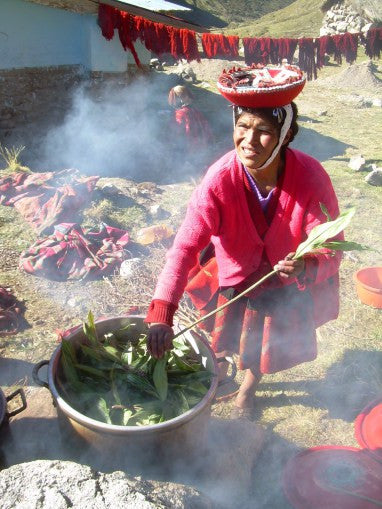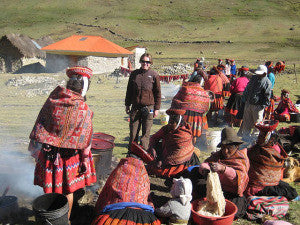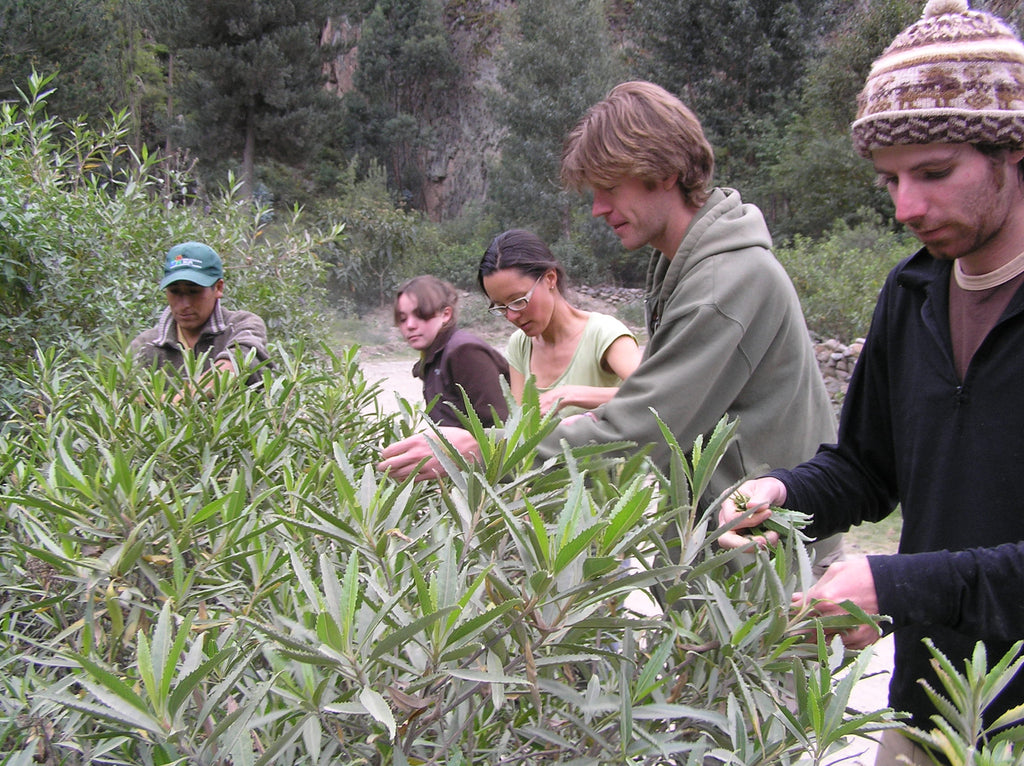
Volunteering with Threads of Peru:
A Glimpse into Life in the Communities of Rumira, Chaullacocha, and Chupani
from Guest Blogger, Kelsey Quam, who volunteered with Threads of Peru for 9 months during the end of 2009, and the first part of 2010.
For a detailed overview of Kelsey´s experiences check out her blog http://kelseyquam.wordpress.com/
Photos from her most recent trip to the communities http://picasaweb.google.com/113228592418929690056
This post is designed to give future Threads of Peru volunteers a realistic picture of how they may spend their time in the communities of Chaullacocha, Chupani, and Rumira. I started working with Threads of Peru in September 2009. My duties involved coordinating meetings with textile experts, organizing visits and workshops in the communities of Rumira, Chaullacocha, and Chupani, making independent trips to the communities, and helping to coordinate visits from the office in Cusco.
 When I first visited the communities of Chaullacocha and Chupani, I realized that these communities were far from my expectations. To call them ¨communities¨ paints images in ones´ mind of houses, streets, and stores. However, Chaullacocha and Chupani are really a mere settlement of small stone and adobe homes separated by great distances of chakra (fields). In Chaullacocha, there is only one small store that stocks staples such as pasta, sugar, and rice. One feels the remoteness of the area after spending a few days there, free from cell phone reception, television, electricity, and a four hour walk to the nearest road which is still over 20 kilometers from the town of Ollantaytambo.
When I first visited the communities of Chaullacocha and Chupani, I realized that these communities were far from my expectations. To call them ¨communities¨ paints images in ones´ mind of houses, streets, and stores. However, Chaullacocha and Chupani are really a mere settlement of small stone and adobe homes separated by great distances of chakra (fields). In Chaullacocha, there is only one small store that stocks staples such as pasta, sugar, and rice. One feels the remoteness of the area after spending a few days there, free from cell phone reception, television, electricity, and a four hour walk to the nearest road which is still over 20 kilometers from the town of Ollantaytambo.
 I didn´t anticipate how hard it would be to break cultural and linguistic barriers in my interactions with community members. The female weavers are especially reserved and generally speak less Spanish than their husbands who often work as porters on the Inca Trail and travel more frequently to Spanish-speaking areas. Thus, I have suffered through some slow interviews and later realized that I could gather more information from women who spoke some Spanish or who were more extroverted. My digital voice recorder helped the interview process. I would record conversations that were moderated through my translator, Urbano Huayna, and he would later help me translate them from Quechua to Spanish. I found a digital voice recorder to be a great tool in insuring the accuracy of the conversation for later use. Not surprisingly, children were the easiest to interact with, as they were as curious about me as I was about them. Once, I visited the primary school in Chaullacocha and illustrated through a map where I was from and how far that was from Peru. I helped the children learn color names, starting with Spanish, moving to English, and finally reciting the words in Quechua. These have been strategies I have used to facilitate interaction with community members despite facing great cultural and linguistic obstacles.
I didn´t anticipate how hard it would be to break cultural and linguistic barriers in my interactions with community members. The female weavers are especially reserved and generally speak less Spanish than their husbands who often work as porters on the Inca Trail and travel more frequently to Spanish-speaking areas. Thus, I have suffered through some slow interviews and later realized that I could gather more information from women who spoke some Spanish or who were more extroverted. My digital voice recorder helped the interview process. I would record conversations that were moderated through my translator, Urbano Huayna, and he would later help me translate them from Quechua to Spanish. I found a digital voice recorder to be a great tool in insuring the accuracy of the conversation for later use. Not surprisingly, children were the easiest to interact with, as they were as curious about me as I was about them. Once, I visited the primary school in Chaullacocha and illustrated through a map where I was from and how far that was from Peru. I helped the children learn color names, starting with Spanish, moving to English, and finally reciting the words in Quechua. These have been strategies I have used to facilitate interaction with community members despite facing great cultural and linguistic obstacles.


Some of my most rewarding experiences have been when I have experienced deep cultural interaction with community members. On one visit I brought several colors of alpaca fiber and sat down to weave with the family I was staying with. ¨Mini,¨ their young child burst out in Quechua each time I paused to think about which pallay (design) came next in the sequence. The abuela, or grandmother of the family, spoke only Quechua and we struggled throughout the afternoon to communicate basic ideas, such as how many siblings I had and how old I was. By the end of the afternoon I had woven a small orange belt with a rectangular design in the middle. The family I was staying with was thrilled that I was learning to weave on the backstrap loom.
If you are thinking about volunteering for Threads of Peru, remember that your experience will be much different than you expect, yet you will be rewarded in many ways. While each individual experience will vary, I hope this entry may be helpful to the work and investigations of future Threads of Peru volunteers.
Read more





 When I first visited the communities of Chaullacocha and Chupani, I realized that these communities were far from my expectations. To call them ¨communities¨ paints images in ones´ mind of houses, streets, and stores. However, Chaullacocha and Chupani are really a mere settlement of small stone and adobe homes separated by great distances of chakra (fields). In Chaullacocha, there is only one small store that stocks staples such as pasta, sugar, and rice. One feels the remoteness of the area after spending a few days there, free from cell phone reception, television, electricity, and a four hour walk to the nearest road which is still over 20 kilometers from the town of Ollantaytambo.
When I first visited the communities of Chaullacocha and Chupani, I realized that these communities were far from my expectations. To call them ¨communities¨ paints images in ones´ mind of houses, streets, and stores. However, Chaullacocha and Chupani are really a mere settlement of small stone and adobe homes separated by great distances of chakra (fields). In Chaullacocha, there is only one small store that stocks staples such as pasta, sugar, and rice. One feels the remoteness of the area after spending a few days there, free from cell phone reception, television, electricity, and a four hour walk to the nearest road which is still over 20 kilometers from the town of Ollantaytambo.  I didn´t anticipate how hard it would be to break cultural and linguistic barriers in my interactions with community members. The female weavers are especially reserved and generally speak less Spanish than their husbands who often work as porters on the Inca Trail and travel more frequently to Spanish-speaking areas. Thus, I have suffered through some slow interviews and later realized that I could gather more information from women who spoke some Spanish or who were more extroverted. My digital voice recorder helped the interview process. I would record conversations that were moderated through my translator, Urbano Huayna, and he would later help me translate them from Quechua to Spanish. I found a digital voice recorder to be a great tool in insuring the accuracy of the conversation for later use. Not surprisingly, children were the easiest to interact with, as they were as curious about me as I was about them. Once, I visited the primary school in Chaullacocha and illustrated through a map where I was from and how far that was from Peru. I helped the children learn color names, starting with Spanish, moving to English, and finally reciting the words in Quechua. These have been strategies I have used to facilitate interaction with community members despite facing great cultural and linguistic obstacles.
I didn´t anticipate how hard it would be to break cultural and linguistic barriers in my interactions with community members. The female weavers are especially reserved and generally speak less Spanish than their husbands who often work as porters on the Inca Trail and travel more frequently to Spanish-speaking areas. Thus, I have suffered through some slow interviews and later realized that I could gather more information from women who spoke some Spanish or who were more extroverted. My digital voice recorder helped the interview process. I would record conversations that were moderated through my translator, Urbano Huayna, and he would later help me translate them from Quechua to Spanish. I found a digital voice recorder to be a great tool in insuring the accuracy of the conversation for later use. Not surprisingly, children were the easiest to interact with, as they were as curious about me as I was about them. Once, I visited the primary school in Chaullacocha and illustrated through a map where I was from and how far that was from Peru. I helped the children learn color names, starting with Spanish, moving to English, and finally reciting the words in Quechua. These have been strategies I have used to facilitate interaction with community members despite facing great cultural and linguistic obstacles.



